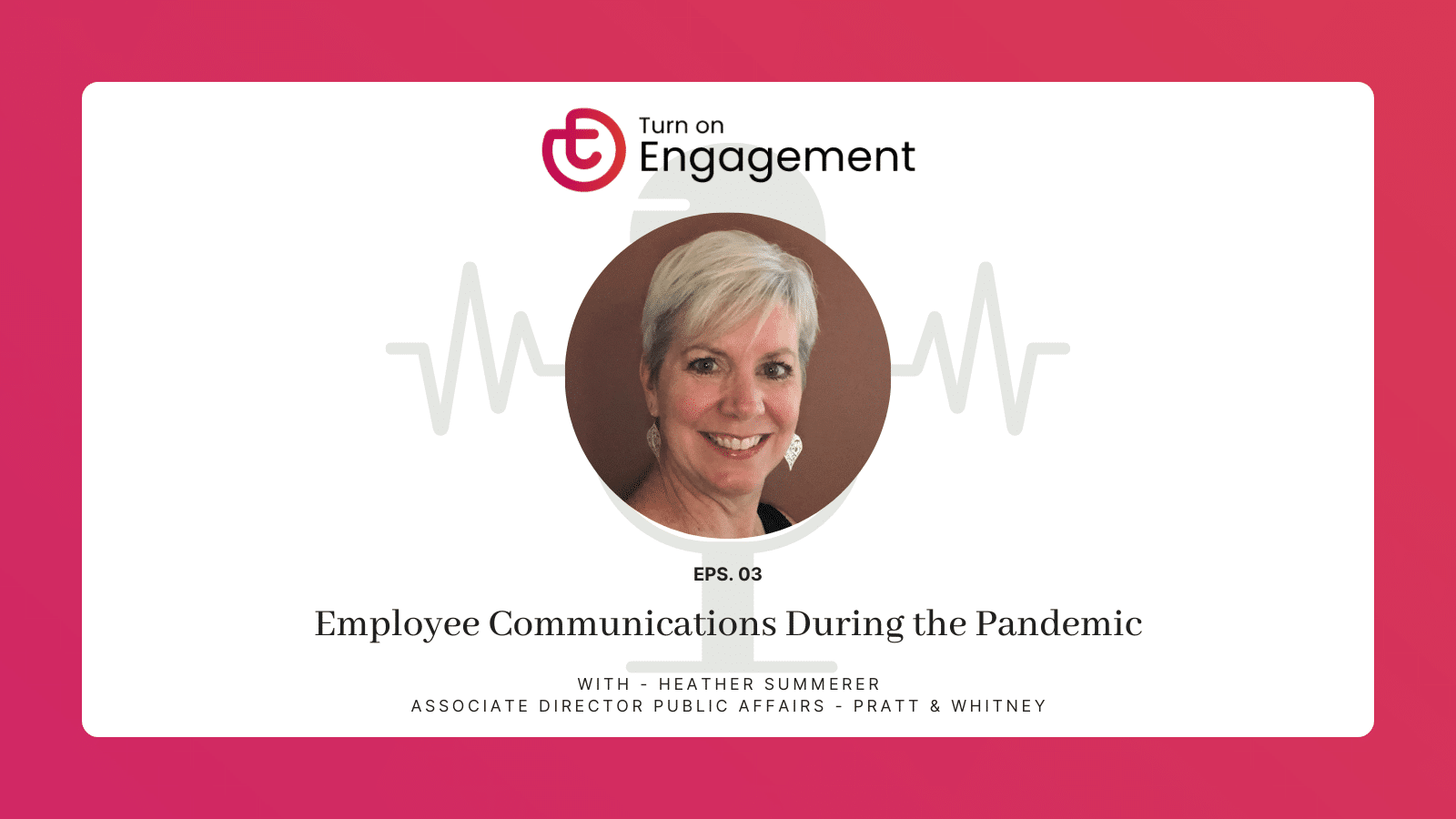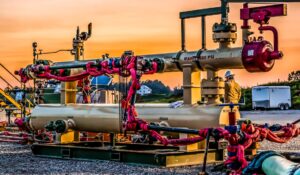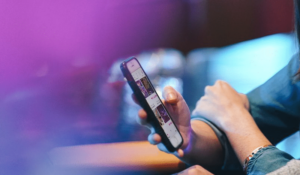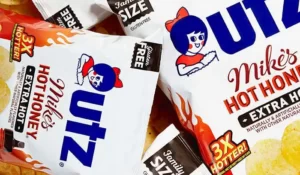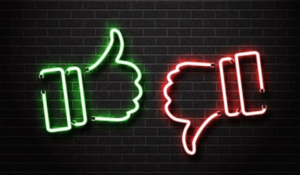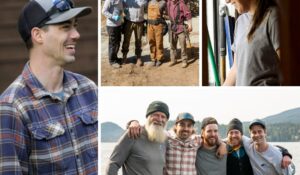Yash sits down with Pratt & Whitney‘s Associate Director of Public Affairs Heather Summerer to talk about how their factories were transformed during the pandemic to manufacture masks, PPE, etc. She talks about how they approached communications during this time.
Follow and listen to the Turn on Engagement Podcast on your favorite audio streaming platforms: Spotify, Google Podcasts, Apple Podcasts, Tune In, iHeartRadio, and RSS.
Podcast Transcript:
Yash Chitre: Hey everyone and welcome to the Turn on Engagement podcast, today we’ve got a very special guest Heather Summerer, associate director of public affairs at Pratt & Whitney you might know Pratt & Whitney as a large aerospace manufacturing company, military engines jet engines. I’m going to talk to Heather today about some really cool stuff that she’s doing specifically, you got to hear how this company handled the pandemic for employee communications, employee engagement. They did some really cool things; they transform their business to help communities literally almost overnight. Went from making jet engines to face masks and PPE and really transforming the company and the culture and she’s going to talk about how it’s changed them as they move forward in terms of employee communications and engagement. It’s a really great uplifting story, I hope you’ll listen to it, stay tuned it’s all coming up next on Turn on Engagement.
Yash Chitre: Hello everyone and welcome to the Turn on Engagement podcast I’m Yash Chitre, senior vice president of marketing and engagement over at Hubengage, and today we’ve got a very exciting guest on the podcast today I’m very excited to talk to her, Heather Summerer is the associate director of public affairs at Pratt & Whitney, very large well-known aerospace company just down the street in good old Connecticut down there, just down the street from us from up here in Boston, but you probably know Pratt & Whitney for commercial jet engines, I think that’s probably what we think of when we think of Pratt & Whitney but a diversified company. I believe owned by Raytheon now which is up here in Massachusetts as well but Heather, welcome to the show.
Heather Summerer: Well, thank you, thanks for having me.
Yash Chitre: Thanks for thanks for being on today. So, I’m really curious and really interested in how a company particularly the size of Pratt & Whitney has addressed employee engagement, employee communications during COVID-19. A lot of companies have had to change on the fly every company I talked to has a different story of how they handled it last year just really interested in how you guys adapted to it and what you guys had to do over at Pratt & Whitney.
Heather Summerer: Well, I think from our standpoint, consistency in our communications was key. We had you know much of our workforce was working from home, we still had employees who were you know actually putting their hands on the engines building the engines who were coming in every day as our essential workers. So we had to be very consistent, we had to be very regular about our communications you know to allow the employees to know, oh I missed something, we’re going to get this newsletter and it’s going to tell us you know what’s new, what new safety precautions are in place, what they can expect to see if they are coming in or if you are working from home and for some reason you do have to go in what’s that gonna look like cause things have changed you know, maybe not all the entrances are open, you have to do a temperature screening so these regular communications were really important to us and you know work from home folks are accustomed to getting information through email you know our frontline workers they need to get it right from their supervisors in their morning toolbox talks before they go and do their job assignment for the day so you know I think that for us was a key to success in keeping everything going and now you know kind of managing the expectations of the employee.
Yash Chitre: That’s great, and then you mentioned message consistency and I think that’s really important. A lot of companies you know struggle with that, just in terms of making sure that it’s business as usual but we’re living in the new normal now inside of how we work every single day, how we interact with people, so keeping the message consistent but also keeping them well informed of health and safety and operational changes, I think it’s it’s really important. You mentioned you know you know people that are actually on the floor on the manufacturing floor, those types of people. How about your office workers as well? Do you guys use different tools to reach them? You mentioned newsletters, you talked about was it a toolbox or a toolkit? What types of channels do you guys use?
Heather Summerer: You know we are such a diverse company, we’re also a global company that we might have to use everything that’s at our disposal.
Yash Chitre: Right.
Heather Summerer: Email is a very good way to communicate with our employees who are working from home. These toolbox talks I mentioned, that’s you know face to face communications where these frontline supervisors are flowing down information. It’s come from the communications organization right to the workers. Everybody is getting the same messages they might just be getting them a little bit differently and we also have to translate into several different languages for a global workforce.
One of the big changes for us is that information that generally came right from saying the corporate office you know now with the global sites they had to pick up a lot of that stuff because their safety protocols may be a little bit different and exactly you know if you don’t have all of your entrance is open or if you’re going to have a certain kind of screening, I mean those were things that really needed to be addressed right there at the site. One of the other big changes that we had was we had a new president start kind of at the beginning of the pandemic which is always when you have a big leadership change like that it’s always interesting to see what will happen and he really took on communicating directly with the supervisors once a month.
There’s a huge call and he talks very frankly about the challenges of working from home. You know he has young kids, his wife has a full-time job, he’s running our company or global company and you know, it doesn’t always go smoothly as we all know and I think you know having him reach out to the supervisory folks in the company and share his challenges you know really made everybody feel like how we’re all in this together, we’re all feeling the same thing, some days it goes really great and you know other days things just don’t go as smoothly and you’re in the middle of a meeting and you know, one of your children runs in or something like that so I think he’s really personalized it a lot and I think the feedback from the employee based on his experience and direct contact in communicating about the situation has really been valuable.
Yash Chitre: That is fantastic, I love to hear it when leadership gets involved and they really lead by example and I think one of the most important lessons that we’ve learned from you know working throughout this pandemic is when leaders can humanize themselves and they can get down to you know every level of the organization, it doesn’t matter what you do. If you’re an hourly employee or you’re an executive right sitting in the corner office, it doesn’t matter. But you know we all share the same pains and the same emotions, and we were all in this together and going through this rollercoaster ride.
If leadership can you know also share the examples of “hey, you know I’ve got kids too and I’ve got these issues and yeah my wife works full time” and all the things you mentioned there, it’s just fantastic to see that and there’s a lot of data out there that would support that when leadership gets involved when leadership plays an active role in communications to employees particularly with you know I call these sort of you to know “Nuggets of Gold”, when you know you strike an emotional connection with somebody that you work with you know, it increases productivity, satisfaction, morale all across the board.
That inline will then you know eventually translate to a better product or service or whatever it is that you’re creating, and overall better customer experience which obviously will then increase your sales. You know hopefully it translates all the way across the board. You know, hits your bottom line and our lives there so you see a financial implication as well so that’s great thank you for sharing that’s definitely great. And a great segue into my next question, how do you see your internal communications aligning up to your external communication? So, your brand promise, the things that you know represent obviously present with me is you know a large company but has a deep history right, has been around for a long time. I would say there isn’t a single person that hasn’t experienced one of your projects, I mean if we’ve all been on an airplane, we annoyingly you know been beneficiaries of one of your products. How do you connect the dots and how do you make sure that you know your internal, external messaging is aligned?
Heather Summerer: Well, there’s a team of people that collaborate on our communications, so they aren’t done independently, they’re done together in concert with each other. It assures alignment and we also make sure that the organizations are all being represented you know when you are out on the shop floor and you’re touching the machine and building those engines you know there may be some nuances to things that are happening in that environment that we might not see in an office environment or for the workers who are working from home. So, it’s important that we have people who represent and have that voice at the table as we are making the messages are you know writing the messages.
Especially, you know when you talk about you know we have military engines, we have commercial engines, we want to make sure that what’s going out to those customers is also very consistent. We want them to know, “hey we’re taking the safety of our workers very seriously” and we want to make sure that we can continue to deliver on our customer commitments, and you know that needs to all be woven into our messaging you know I think that it’s critical to you know to build those consistent messages and build them together.
Yash Chitre: Yes absolutely, I think that alignment is really important and it’s good to hear that. It sounds like it starts at the ground floor that you know your internal and external teams are working together which is just really good and that’ll pretty much guarantee or your message consistency across the board. I know there’s a lot of companies that often don’t think of their employees first right? They think of their customers and of course, that’s the bottom line at the end of the day, that’s what they’re pressured to do.
But then they do some employee communications from you know from time to time, but it doesn’t necessarily match up to the brand promise and then you get a disconnect there, so during that you guys are doing it together from the ground up, the internal and the external teams it’s really great. Actually I just kind of want to wrap up and ask you a little bit about how has the pandemic caused this shift in communications in terms of your culture and your strategy? Do you see a time, where I mean hopefully we round the corner on the pandemic and you know we can start to get back to somewhat sense of normalcy you know in the years to come?
But you know, if you kind of had a crystal ball and where to look at it, knowing everything that you know about this year do you see you know Pratt going back to you know traditional communication you know tactics things like that? Or is it gonna constantly required you know changing shift and how you think and in the paradigm of your strategy? Do you know what the future really looks like for employee communications and engagement at Pratt & Whitney?
Heather Summerer: With me, I think it really has changed you know, I think as the workforce is changing, you know some of these practices that we’ve put in place are going to be here to stay. I don’t think that you know just from a culture standpoint with communications, we’ve seen a lot of shifts at Raytheon and at Pratt & Whitney. You know one inch, in particular, is, how we are positioning ourselves in the local communities and the importance that holds with our employee base and they really want to be a part of that you know, when the pandemic originally started and we actually shifted some of our production into making face shields to be donated back to frontline workers and our employees were really excited to be able to do something you know you think you heard about all these manufacturing companies that were changing their lines to help with the pandemic you know how can an engine company possibly contribute to that and our brilliant engineers figured out a way and we were producing face masks and we actually had a waiting list of employees who wanted to help with the 3D printing, with quality control, packaging, shipping.
You know the whole, people would just call and say, how can I be a part of that? We also partnered with the state and community health centers to open the largest drive-through vaccine center in Connecticut on our deactivated runway on our property. You know this is something else that really, that gets on the news all the time about this particular vaccine center it’s right on our runway. You know, there’s no it’s in the main Pratt & Whitney runway, our employees are really proud of that, and I think it’s a really important message that we continue to drive externally in the local communities. I mean when we step back and you know things were kind of coming at us and didn’t really know what was coming next, it was stuff that didn’t really fit into what was your typical strategy and how you interacted with the community previously, but I think people were at a place where they just wanted to do something and our leadership was in that place where they were like let’s figure it out, lets you know figure out how we can stand up this vaccine center on our property.
You know, there were lots of different things, we hosted a “trick or treat” event for the kids in the town, East Hartford, is the town where our headquarters is located and we spent a whole day out there with all sorts of businesses from the community just, it was a drive-through thing and we just for dropping candy in residents’ cars. You know, we also there was we were able to make donations of face masks and hand sanitizer and the paper gowns that we use in some of our labs, and we were able to donate those back to hospitals.
We even you know around December, we were looking, you know how do we thank, just a little thank you to our employees who’ve been coming into work every day. You know we can’t have the holiday parties that we used to have at the end of the year, so we decided to give each one of our employees a voucher to go buy lunch at a local restaurant that was privately owned, and you know we were able to do this at 10 different in 10 different states across the US. We were able to give a little bit of support to more than a dozen restaurants, some of our employees even were like, this is great thank you very much, but I’d like to take the money that I would have gotten for the restaurant and give it to the food pantry in the local area.
So, even you know there was kind of a little turn of events with that effort that our employees took on and said you know to give my money to the food shelter. So, you know I just I think there’s so many, you just didn’t know what was coming towards you and I think we just got really flexible and said OK, you know we donated laptops to a local school. I mean you know these things just wouldn’t typically fall into our run of the day, run of the mill strategy but, I think everybody just was so shocked at how the pandemic rolled out and wanted to be a part of doing something positive and you know as a company you know we should tell that story and tell you to know this story about how we are part of the community and we should be a part of a solution.
Yash Chire: I love it, what a great story and I’m so glad you shared this story with us. Thank you, I mean hearing you know a company adapt the way you guys adapted, and then just all the things you did, you know involving the community, you know literally taking your runway, your deactivated run away and turning that into something good that was desperately needed at that time and not just because it’s what we needed to you know to fight the pandemic and the things that were going on but giving people a sense of belonging and commitment. It really goes to show the culture of your company and you know how you guys took that and almost made an external right there, I mean you guys sound like you guys did a bang-up job with it, I’m just so glad to hear it. Particularly for a company that traditionally is you know obviously known for you know military engines, commercial jet engines and then you think, OK the pandemic happens, you know all the clients are slowing down, nobody is traveling anymore.
Eventually that you know that effect is gonna you know to come to your business as well, but there is so much good that you can do, and you know coming up with you know producing PPE and face masks and things like that. It really goes to show your corporate responsibility or social responsibilities, you know these things don’t go away no matter what. You know we often rely on government and things like that to help us, but you know, private corporations you know no matter how big or small, can all play a role and support each other and uplift each other. I loved hearing about the restaurants, and you know supporting local businesses and things like that.
This has been really uplifting to hear. It certainly made my Monday morning and I hope everybody listening on this will also be enlightened and uplifted and inspired to maybe do some of the things that Heather talked about here as well. If you’d like to contact Heather or read more about her, we’ll include her LinkedIn profile link in the video description up on YouTube, so definitely connect with her there. Hopefully, she’ll be able to answer any further questions about you know what they did at Pratt & Whitney. Heather, I’d really like to thank you for joining the show today, I hope you enjoyed being on as well and we’d love to have you on again in the future.
Heather Summerer: I did, well thank you very much for having me.
Yash Chitre: Alright, thank you so much, thanks to everyone for listening, and stay tuned, we will have the next podcast coming up this week. We’ve got some great companies coming in healthcare, in retail, and of course on manufacturing, where we’ll talk about all things employee engagement and communication.

